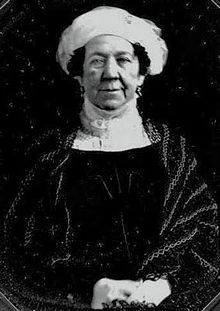| FieldGuidetoQuilts.com |
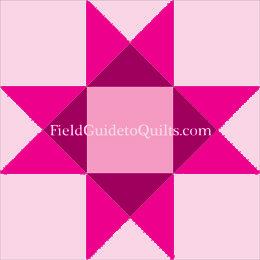 Ohio Stars & variations
*** Ohio Stars & variations
***
|
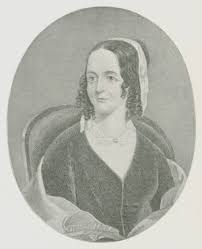 Box: Box:The most influential woman in America |
Ohio Stars look a lot like nine-patches because they feature an unseamed center square, but even the basic Ohio Star is done on a 6x6 grid to accommodate the four mini-blocks on the top, bottom and sides of the block. Each one is a set of quarter-square triangles, usually with two colors per mini-block.
Because Ohio Star is such a beloved block, the basic design has collected names that once stood for specific variations. We've tried to get back to specifics on this page. Click on a small block below for a short-cut to the block information.
Ohio Star Ohio Star Ohio StarLadies Art Co. #323 1897                          Ohio Star 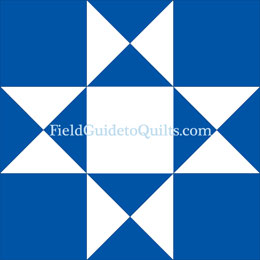                         Ohio Star  Ohio Star Ohio StarHall, 1935 In 1862 Godey's Lady's Book published this, the classic Ohio Star, without a name, and 35 years later, the Ladies Art Company published it as Eight Point Design (#323, 1897). The block came to be known as Ohio Star by the early 1930s, after it was published in Capper's Farmer (1927). It is drawn here on a 6x6 grid (as are all but the last two blocks on this page). We're not sure exactly what it looked like in Capper's, but quilt researcher Carrie Hall showed Ohio Star as solid white on a dark print. The block at upper left is the LAC's version. The last four alternative names came from Bettina Havig's Carrie Hall Blocks. The names also refer to specific Ohio Star variations that are covered below. Lone Star and Texas Star are also names for 13- and 15-ring Lone Stars. |
||
Mosaic Patchwork #1 Mosaic Patch- Mosaic Patch-work #1 Saward 1882                          Mosaic Patchwork #1 Mosaic Patchwork #1 was an early Ohio Star variation, published in Dictionary of Needlework (Blanche Saward, et al.), in 1882. Barbara Brackman's Encyclopedia shows the arrangement of printed, light, and dark fabrics for the block. Clara Stone's 1906 "Practical Needlework" used the same arrangement but called it Happy Home. |
||
Variable Star
|
||
Lone Star
|
||
Star Spangled Star Spangled Star Spangled
McCall's Magazine 1930                          Star Spangled Among the five names for this block, Star Spangled appears to be the earliest, with a 1930 publication date in McCall's. However, the earliest name was very likely Henry of the West, which is also an alternative name for a block known as Clay's Choice. Henry Clay was a Kentucky politician who lost the race for president against James Polk in 1844. Since Clay was a slaveowner, his name wouldn't have been a national magazine's the first choice of block monikers. All Star Spangled's fabrics were prints except for the background. We assume the colors were intended to be red, white, and blue. Nancy Page is the source for the alternate names, but Star of Hope is the only one for which we have a date, and that, Beyer tells us, is 1934. |
||
Flying Crow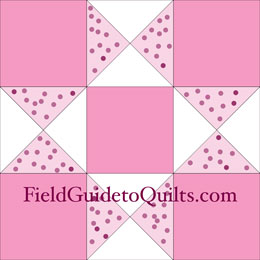 Flying Crow Flying CrowFarm Journal Quilt Patterns Old and New 1935                          Flying CrowFlying Crow appeared in Farm Journal Quilt Patterns Old and New, which Jinny Beyer, in her Quilter's Album, dates to about 1935 Flying CrowFlying Crow appeared in Farm Journal Quilt Patterns Old and New, which Jinny Beyer, in her Quilter's Album, dates to about 1935 |
||
The Four X Quilt The Four X Quilt The Four X QuiltMrs. Danner 1970                          The Four X QuiltMrs. Danner's Four X Quilt block was published in 1970. She was a longtime professional quilter living in Emporia, Kansas, who published five pattern booklets from 1932 through 1970. Helen Ericson bought her business that year. Ericson republished all five booklets and issued two more through 1975. The Four X QuiltMrs. Danner's Four X Quilt block was published in 1970. She was a longtime professional quilter living in Emporia, Kansas, who published five pattern booklets from 1932 through 1970. Helen Ericson bought her business that year. Ericson republished all five booklets and issued two more through 1975. The Swamp Angel instructions (see the Make It! icon below) can be used for The Four X Quilt block too. |
||
Swamp Angel
Original Unnamed Godey's Ladies Book 1858                          Swamp Angel Godey's Design Swamp Angel was first published without a name in Godey's Ladies Book in 1858, which means it's called "Godey's Design" like all the other unnamed Godey's blocks. The name Swamp Angel, from Nancy Cabot of the Chicago Tribune (1938), is one of the most memorable block names around, and in a whole quilt, the block is one of the prettiest Ohio Star variations. We haven't seen an original of the designs, so we're relying on Barbara Brackman's Encyclopedia for the placement of colors and prints. | ||
Mystery Flower Garden Mystery Flower Garden Mystery Flower GardenPrize-Winning Designs 1931                          Mystery Flower Garden Mystery Flower Garden This block, so similar to Swamp Angel, is made of solid pieces with eight scrap-fabric triangles. It's from a booklet called Prize-Winning Designs (ca. 1931), according to Jinny Beyer. Brackman credits it to an undated Aunt Martha publication. |
||
Aunt Eliza's Star
|
||
Dolly Madison Star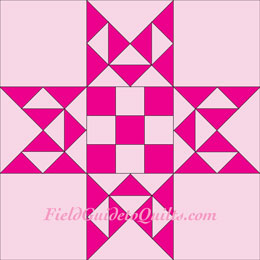 Dolly Madison Star Dolly Madison StarFinley 1929                          Dolly Madison Star Dolly Madison Star
When his social charms fell short, President James Madison could always count on his wife Dolley. Dolley was a remarkable hostess, and she was quick-witted enough to save a painting of George Washington when the British torched the White House during the War of 1812. We're not sure how Dolly dealt with the state papers that Madison asked her to save, but she did also fill a carriage with the drapes, china, and silver that she'd bought to use in the White House dining room. Mrs. Madison came to her post with job experience. She had also served on occasion as the country's hostess for the widowed President Thomas Jefferson, and she was the first president's wife to be called the First Lady. That said, the block named for her was first published in 1929, so far as we can tell, in Finley's Old Patchwork Quilts. Source: "How Dolley Madison Saved the Day." Thomas Fleming. Smithsonian, March 2010. |
||
The Kaleidoscope Quilt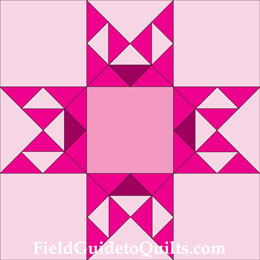 The Kaleidoscope Quilt The Kaleidoscope QuiltKansas City Star 1930                          The Kaleidoscope Quilt The Kaleidoscope QuiltThe Star said that for a scrap quilt, the design was even better than the Double Wedding Ring. |
||
 |
||




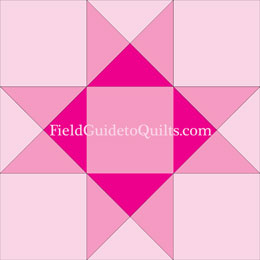 Variable Star
Variable Star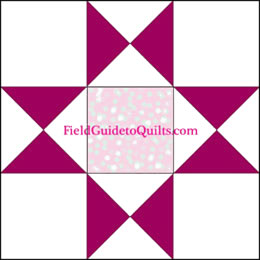 Lone Star
Lone Star
 Aunt Eliza's Star
Aunt Eliza's Star